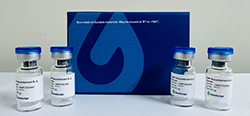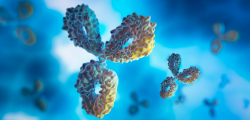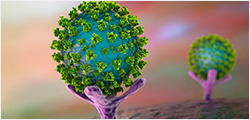Transmembrane protein 95 (TMEM95) is located on the acrosomal membrane of the sperm head
involved in the acrosome reaction; thus, it is regarded as affecting spermatogenesis and reproduction traits. The
aim of this study was to explore the novel single nucleotide polymorphisms (SNPs) within the pig TMEM95 gene
as well as to evaluate their associations with the testicular sizes in male Landrace (LD) and Large White (LW)
breeds. After pool sequencing and bioinformatics analysis, only one novel coding SNP was found in exon ,
namely NC_010454.3: g.341T > C, resulting in a synonymous mutation (A47A). This SNP could be genotyped
using the StuI polymerase chain reaction–restriction fragment length polymorphism (PCR-... More
Transmembrane protein 95 (TMEM95) is located on the acrosomal membrane of the sperm head
involved in the acrosome reaction; thus, it is regarded as affecting spermatogenesis and reproduction traits. The
aim of this study was to explore the novel single nucleotide polymorphisms (SNPs) within the pig TMEM95 gene
as well as to evaluate their associations with the testicular sizes in male Landrace (LD) and Large White (LW)
breeds. After pool sequencing and bioinformatics analysis, only one novel coding SNP was found in exon ,
namely NC_010454.3: g.341T > C, resulting in a synonymous mutation (A47A). This SNP could be genotyped
using the StuI polymerase chain reaction–restriction fragment length polymorphism (PCR-RFLP) assay. The
minor allelic frequencies (MAFs) were 0.259 and 0.480 in the LD and LW breeds. Their polymorphism information
content (PIC) values were 0.310 and 0.375. The LW population was at the Hardy–Weinberg equilibrium
(HWE) (p > 0.05), whereas the LD population was not (p < 0.05). Association analyses demonstrated that a significant
relationship was found between this A47A polymorphism and testis weight at 40 days of age in the LW
population (p = 0.047), and the heterozygote individuals showed lower testis weight than those with other genotypes.
Moreover, this SNP was significantly associated with three testis measurement traits at 15 days of age in
the LW population (p < 0.05); the individuals with genotypes TT and TC showed consistently superior testis
measurement traits than those with genotype CC. These findings demonstrate that the A47A polymorphism had
a significant effect on testis measurement traits, suggesting that the TMEM95 gene could be a candidate gene
associated with reproductive traits. These results could contribute to breeding and genetics programs in the pig
industry via DNA marker-assisted selection (MAS).

































